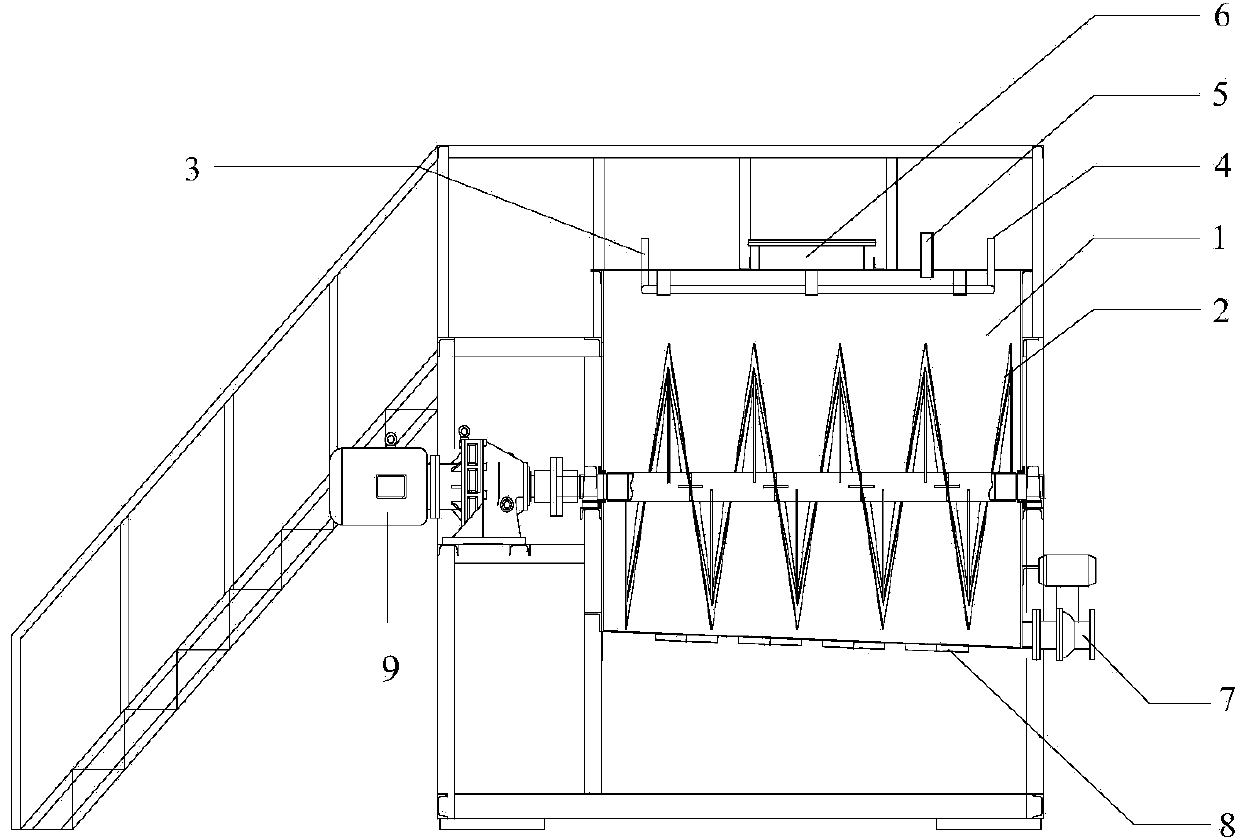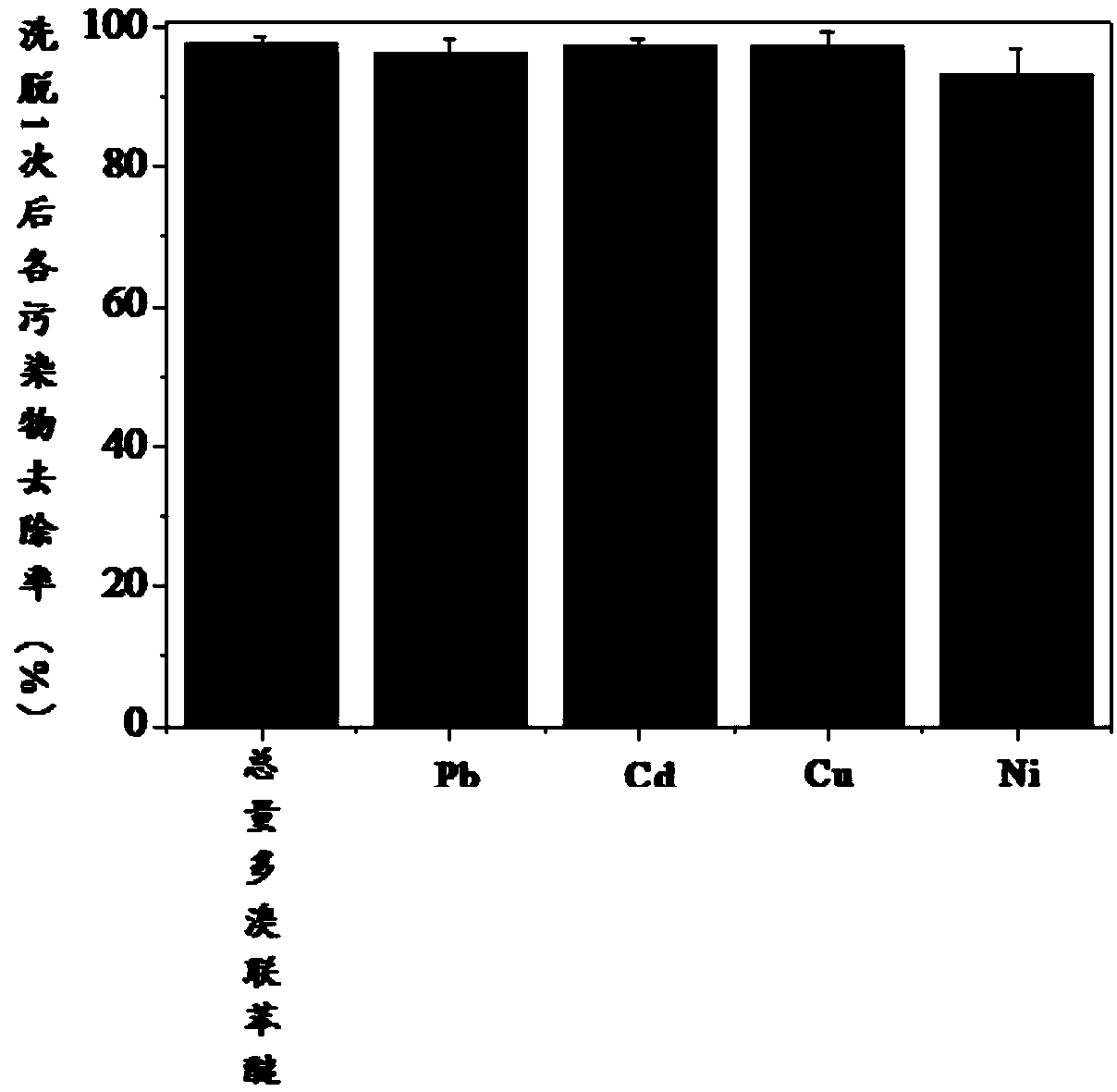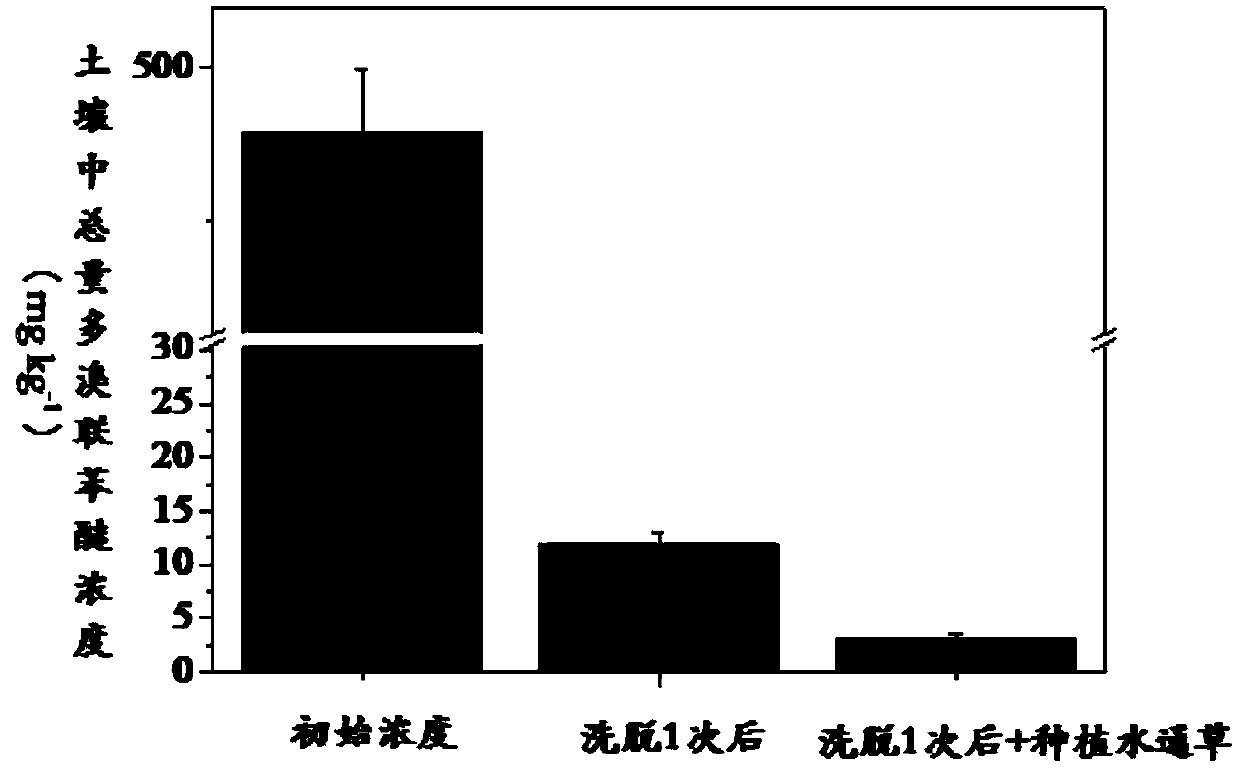Chemical elution-plant combined remediation method of polybrominated diphenyl ether and heavy metal compound contaminated soil
A polychlorinated diphenyl ether and compound pollution technology, applied in the restoration of polluted soil, etc., can solve the problem of poor effect, difficult and efficient elution and removal of organic-inorganic pollutants, and less attention and research and development of contaminated soil remediation technology, etc. problems, achieve the effect of reducing interfacial tension and surface tension, promoting desorption migration ability, and improving elution removal rate
- Summary
- Abstract
- Description
- Claims
- Application Information
AI Technical Summary
Problems solved by technology
Method used
Image
Examples
Embodiment 1
[0043] For total PBDE concentrations greater than 100 mg kg -1 And less than 500 mg kg -1 , Pb concentration greater than 600 mg kg -1 And less than 1000 mg kg -1 , Cd concentration greater than 1 mg kg -1 and less than 10 mg kg -1 , Cu concentration greater than 1000 mg kg -1 And less than 2000 mg kg -1 , Ni concentration greater than 200 mg kg -1 And less than 500 mg kg -1 The composite polluted soil:
[0044]The test soil was collected from a polluted site of an electronic waste treatment plant in Jiangning District, Nanjing City, Jiangsu Province. The soil samples were air-dried, the impurities were sorted out, and the soil samples were passed through a 10-mesh sieve for later use. The basic physical and chemical properties of the soil are pH 6.1, organic matter content 21.2 g kg -1 , total nitrogen 1.4 g kg -1 , available nitrogen 49.3 mg kg -1 , total phosphorus 0.5 g kg -1 , available phosphorus 56.2 mg kg -1 . The mechanical composition of the soil is 9....
Embodiment 2
[0048] For total PBDE concentrations greater than 500 mg kg -1 And less than 1000 mg kg -1 , Pb concentration greater than 1000 mg kg -1 And less than 5000 mg kg -1 , Cd concentration greater than 10 mg kg -1 and less than 50 mg kg -1 , Cu concentration greater than 2000 mg kg -1 And less than 5000 mg kg -1 , Ni concentration greater than 500 mg kg -1 And less than 1000 mg kg -1 The composite polluted soil:
[0049] The test soil was collected from the polluted soil of an electronic waste recycling plant in Longtang Town, Qingyuan City, Guangdong Province. The soil samples were air-dried, the impurities were sorted out, and the soil samples were passed through a 10-mesh sieve for later use. The basic physical and chemical properties of the soil are pH 6.7, organic matter content 18.3 g kg -1 , total nitrogen 1.6 g kg -1 , available nitrogen 46.6 mg kg -1 , total phosphorus 0.3 g kg -1 , available phosphorus 47.8 mg kg -1 . The mechanical composition of the soil ...
Embodiment 3
[0053] For total PBDE concentrations greater than 1000 mg kg -1 , Pb concentration greater than 5000 mg kg -1 , Cd concentration greater than 50 mg kg -1 , Cu concentration greater than 5000 mg kg -1 , Ni concentration greater than 1000 mg kg -1 The composite polluted soil:
[0054] The test soil was collected from the polluted soil of an electronic waste treatment plant in Guiyu, Guangdong Province. The soil samples were air-dried, the impurities were sorted out, and the soil samples were passed through a 10-mesh sieve for later use. The basic physical and chemical properties of the soil are pH 6.3, organic matter content 18.2 g kg -1 , total nitrogen 1.9 g kg -1 , available nitrogen 49.3 mg kg -1 , total phosphorus 0.45 g kg -1 , available phosphorus 66.5 mg kg -1 . The soil mechanical composition is 15.9 wt.% sand, 58.3 wt.% loam, and 25.8 wt.% clay. The background pollution concentrations of total PBDEs and Pb, Cd, Cu, Ni in soil were 2342.5 ± 127.3 mg kg -1 , ...
PUM
| Property | Measurement | Unit |
|---|---|---|
| Particle size | aaaaa | aaaaa |
Abstract
Description
Claims
Application Information
 Login to View More
Login to View More - R&D
- Intellectual Property
- Life Sciences
- Materials
- Tech Scout
- Unparalleled Data Quality
- Higher Quality Content
- 60% Fewer Hallucinations
Browse by: Latest US Patents, China's latest patents, Technical Efficacy Thesaurus, Application Domain, Technology Topic, Popular Technical Reports.
© 2025 PatSnap. All rights reserved.Legal|Privacy policy|Modern Slavery Act Transparency Statement|Sitemap|About US| Contact US: help@patsnap.com



